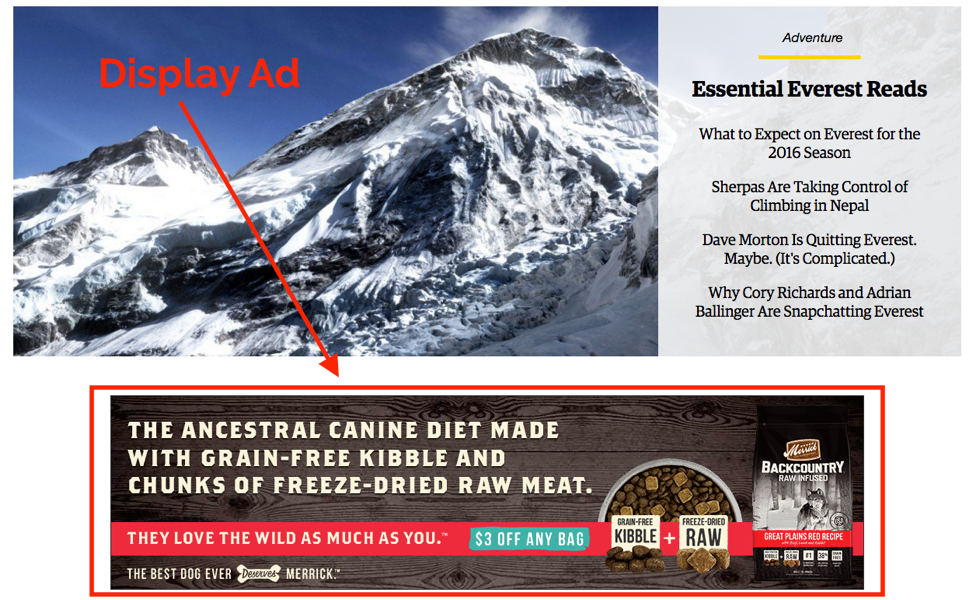Knowing the Difference Between Search & Display Remarketing
Remarketing is a powerful tool for digital marketers. Being able to track and target customers that are already familiar with your business not only cuts costs & boosts conversions, but can also help build brand loyalty.
Remarketing capabilities are available through various digital media mediums, most prominently through display advertising and paid search advertising. Recently there was an internal debate at GCommerce regarding the correct nomenclature for each type of retargeting. There are Remarketing Lists for Search Ads and Display Retargeting from Search. But which one of these is also referred to as Search Retargeting? And what is Display Search Retargeting? We’re here to set the record straight and bring clarity to each type of retargeting.
REMARKETING LISTS FOR SEARCH OR SEARCH RETARGETING
Typically, Search Network campaigns are used to reach consumers right when they need something by showing ads on a search engine’s results page. If a consumer is looking for a hotel in Park City, UT and wants to go skiing while on vacation, they might use the keyword “ski hotel in park city”. When the search results pop up, companies who bid on that keyword will have their ads shown, usually at the top of the page, along with all the other organic search results underneath.

If this potential customer is only doing a preliminary search and visits your website, they may not be ready to make a purchase, but you want to make sure your company remains top of mind when they do further research. Retargeting Lists from Search Ads, also known as RLSA or Search Retargeting, is a method of targeting people who leave your site without converting using a retargeting tag that is placed on each page of your site. You are then able to retarget that audience list on the search engine results page with custom text ads with specific messaging.
DISPLAY SEARCH RETARGETING OR DISPLAY RETARGETING FROM SEARCH
Display retargeting campaigns are more geared towards customers that are earlier on in the buying process as well as brand recognition. Like RLSA, site targeting via display retargeting will serve your ads to people who have visited your site before, however, these ads are shown on other websites and not search engine results pages. If you’ve ever looked at an item on Amazon and then seen an ad for that exact item on the sidebar of another site, that’s a display retargeting ad at work.

However, site targeting isn’t the only way to run a display campaign. You can also target display ads based on search terms that people type into their favorite search engine. This is called Display Retargeting from Search or Display Search Marketing. First, make a list of keywords for your display retargeting from search campaign, and once someone searches for one of those keywords, they are eligible to be shown one of your ads. This can be a powerful tool to have in your arsenal because it allows you to show your ads to people even if they haven’t visited your site before, which is great for bringing in new customers. Display ads are cheaper than paid search ads, so using the same keyword, you would pay less for a search retargeting display ad.
RETARGETING IN ACTION
Let’s say you are looking to bring in more revenue from your wedding business. Your hotel gets a good amount of traffic to the site, and the hotel just made some major upgrades to their banquet areas so management is looking to start seeing some return on that investment. This would be a perfect opportunity to use an RLSA (reminder: RLSA = remarketing lists for search ads) campaign.
You can set up retargeting on the wedding page of your website to start building a list of people who visit that page but do not submit an RFP form. We want to exclude visitors who have already converted on this page. Then you can write custom, targeted ads specific to those people that will show up on the Search Engine Results Page next time they search for weddings terms related to your property. Since they are already familiar with the hotel and the ad copy is written specifically for them, maybe even featuring a special offer or amenity, this strategy should drive qualified traffic and increase conversions and ultimately wedding revenue.
Now, let’s pretend your hotel recently made some changes to hotel policies and the property has become pet-friendly. A cost-effective approach to promote the hotel’s new pet friendly status would be to run a display search retargeting campaign.
You would start by building out a keyword list to include “pet friendly” hotel related terms, as well as developing new creative that highlights the new pet policy. Once this has been done, guests who had previously visited your site and are now looking for pet friendly hotel options will be shown your new ads while they are browsing other sites, making sure you remain top of mind as well as informing them of the pet policy.
That’s it. Feel free to boast your new knowledge on the difference between Search Retargeting and Display Retargeting to your coworkers.
If you have any questions about Search vs. Display remarketing, or if you’d like to learn more about how GCommerce runs retargeting campaigns for our hotel partners, we’d love to hear from you!


